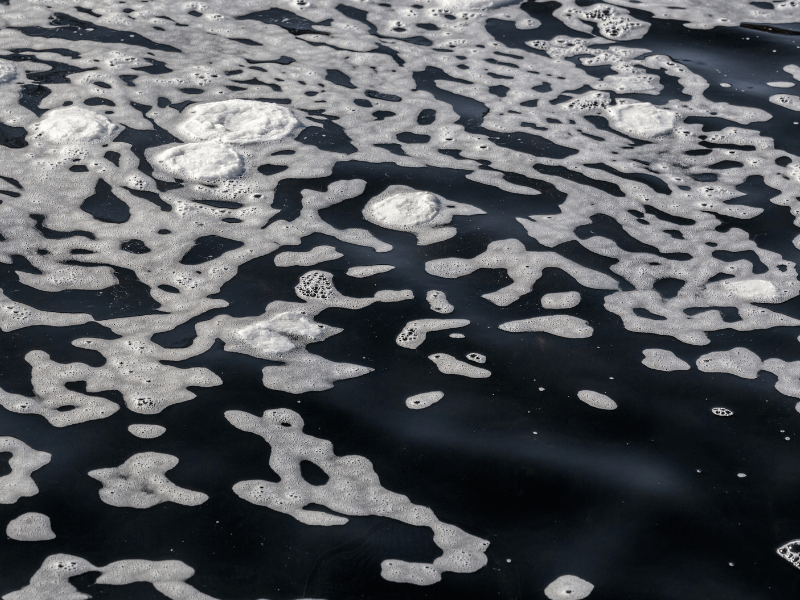Foamy Water

The foam is normally caused by a build up of protein in the pond from organic matter that is decaying at the bottom of the pond; this can be from overfeeding, a build up of fish waste or decaying plant material. The foam is harmless in small amounts and may disappear on its own over time, however it should be investigated as soon as possible. The foam stops carbon dioxide from leaving the pond and oxygen from getting into the pond; this could be a major problem for your fish.
It is perfectly normal for foam to appear around a fountain or at the bottom of a waterfall. At the point where the water crashes into the water and mixes with oxygen, this can create bubbles which then forms a light foam on your pond. If this is the case, then the foam will disappear on its own.
Test your Water (Useful Blogs: Water Quality, Bacteria: The Importance of Healthy Bacteria)
Firstly, test your water. The underlying problem can be caused by high ammonia, nitrites or nitrates. These are norma lto have in a pond, but they can spike and this will need to be treated accordingly. Great testing kits include the Blagdon Pond Health Test Kit or the Tetra Pond Test 6-in-1 Kit. If these chemicals are too high, you should treat them using the PondXpert Gel Balls. Alternatively, increasing the number of plants in your pond, like Oxygenators and Elodea Densa, can vastly improve the quality of the water.
.jpg)
If your pump and filter set are too small, they will not be able to filter your pond effectively. This allows sludge to build up and affect the balance of your water. Furthermore, your filter may not have enough biomedia to manage the chemicals in your pond. You should consider upgrading your system to improve the UV, mechanical and biological filtration; this will remove more debris, control algae and manage the chemicals in your pond.
If you are experiencing a lot of sludge on the bottom of your pond, you should manually clear the pond with a heavy-duty net, electric vacuum, or via a chemical treatment.
Is your pond heavily stocked? Are you overfeeding your fish? Are your Fish spawning?
A heavily stocked pond will impact the chemical balance in your pond. The fish will need feeding more which may result in overfeeding and they will produce more waste which may not be picked up by your filter. This increases the decaying matter at the bottom of your pond and can cause foamy water. As above, you should check whether your filtration systems are suitable. Often, a pond will be stocked without the consideration that the fish will breed over time. If you are feeding your fish a high-protein food, then try using food that contains less-protein or reduce how often you feed your fish.
If your fish are spawning, this may result in a temporary foam on the surface of your pond. Occasionally, Koi can flail when they spawn; this can cause sludge to become unsettled and alter the chemical balance in your pond. If your pond is experiencing spawning fish, then the foam will go away on its own.

Other Treatments
A quick solution to treating foamy water is to increase the number of partial water changes you do on the pond. You may need to commit to a partial water change once a season, or once a month depending upon the severity of the problem; though this may not be possible depending on your water bill or your location.
If you do a partial change, do not forget to use dechlorinated tap water. You can either use a treatment or a PondXpert Dechlorinator to remove chlorine and chloramines.
The foam should also disappear naturally over time; while this is free and very easy to do, it may take months for the foam to disappear. It really depends on the cause of the foam. So test your water.
If you need any further assistance, please email us on info@pondkeeper.co.uk.